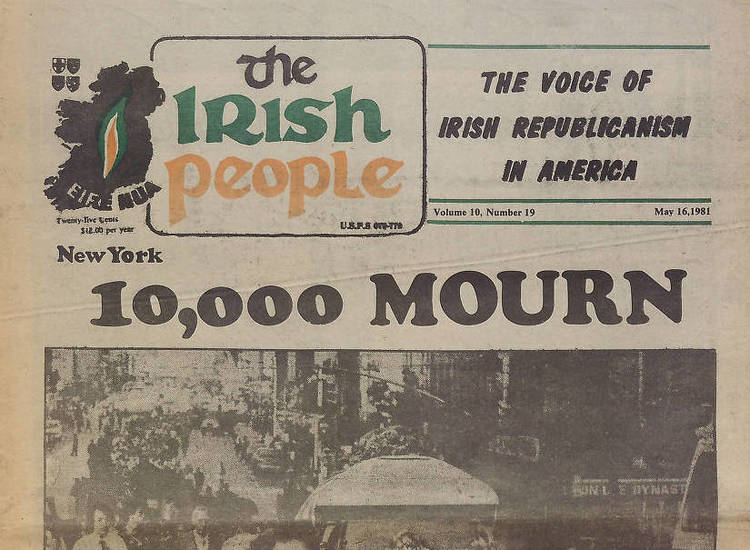Between the Lines / By Peter McDermott
Louisville was among the cities that figured in the news Tuesday morning with turbulent events continuing there after curfew. It’s certainly been in the eye in the storm of late.
The birthplace of Muhammad Ali is, interestingly, also home to Senate Majority Leader Mitch McConnell. Which reminds me: a reader wrote after a recent column of mine that failed to show sufficient deference to Corporal Bonespurs, the white nationalist in the White House. As an “Irish socialist,” he suggested, I didn’t appreciate fully that there was “no free lunch.” Guilty as charged on the labeling, but on the second part I preferred not to reply. The man was respectful enough and as we welcome feedback, I’d no wish to inhibit that. I would like to have said to him, however, that I’ve been paying federal tax dollars since 1994 in a state that gets about 90 cents back to $1 paid to the Federal government, whereas Kentucky is a net beneficiary at $2.41 for its $1. Free lunch, anyone?
McConnell and the late great Ali’s Louisville is one of those places that the media sometimes refers to as having “de facto segregation.” American scholar Richard Rothstein argues, in contrast, that the United States has been suffering the consequences of generations of “de jure segregation.”
In his 2017 book “The Color of Law: A Forgotten History of How Our Government Segregated America,” Rothstein takes issue with a decision involving Louisville written back in 2007 by U.S. Supreme Court Chief Justice John Roberts. Indeed his entire book, which has been praised on the left and right, can be viewed as a critique of Roberts’s position in that decision and a 1992 position taken by Justice Anthony Kennedy.

Chief Justice John Roberts.
But first, he tackles Justice Potter Stewart’s explanation in a 5-4 vote back in 1974. “The majority reasoned,” Rothstein writes, “that because government policy in the suburbs had not segregated Detroit’s schools, the suburbs could not be included in the remedy.”
Black students were concentrated in the city and not spread out in Detroit’s suburban schools because of, Stewart wrote, “unknown and perhaps unknowable factors such as in-migration, birth rates, economic changes, or cumulative acts of private racial fears.”

Justice Potter Stewart.
Justice Stewart concluded: “The Constitution simply does not allow federal courts to attempt to change that situation unless and until it is shown that the State, or its political subdivisions, have contributed to cause the situation to exist. No record has been made in this case showing that the racial composition of the Detroit school population or that residential patterns within Detroit and in the surrounding areas were in any significant measure caused by governmental activity.”
For Rothstein, the most important part of all of this is that evidence was provided. He writes that the “civil rights plaintiffs did offer evidence to prove that residential patterns within Detroit and in the surrounding areas were in significant measure caused by government activity. Although the trial judge agreed with this argument, Justice Stewart and his colleagues chose to ignore it, denying that such evidence even existed.”
He continues: “This misrepresentation of our racial history, indeed this willful blindness, became the consensus view of American jurisprudence.”
With regard to Roberts’s later decision, Rothstein writes, “Because neighborhoods in Louisville and Seattle had been segregated by private choices, [the chief justice] concluded, school districts should be prohibited from taking purposeful action to reverse their own resulting segregation.”
The author says, “This is not a book about whites as actors and blacks as victims. As citizens in this democracy, we — all of us, white, black, Hispanic, Asian, Native American, and others — bear a collective responsibility to enforce our Constitution and to rectify past violations whose effects endure.”
The violations began not long after “Congress enforced the abolition of slavery by passing a Civil Rights Act in 1866, prohibiting actions that it deemed perpetuated the characteristics of slavery. Actions that made African Americans second-class citizens, such as racial discrimination in housing, were included in the ban.”
But interpretations from 1883 by the Supreme Court ignored exclusions from housing markets and that continued to be the case until the last quarter of the 20th century. For a whole century, government policy prevented, unconstitutionally in the author’s view, whites and African Africans from living among one another.
“We have become embarrassed about saying ‘ghetto,’ a word that accurately describes a neighborhood where government not only concentrated a minority but established barriers to its exit,” Rothstein says, “We don’t hesitate to acknowledge that Jews in Eastern Europe were forced to live in ghettos where opportunity was limited and leaving was difficult or impossible.”
The author concludes the preface to “The Color of Law” by saying, “We have created a caste system in this country, with African Americans kept exploited and geographically separate by racially explicit government policies. Although most of these policies are now off the books, they have never been remedied and their effects endure.”









